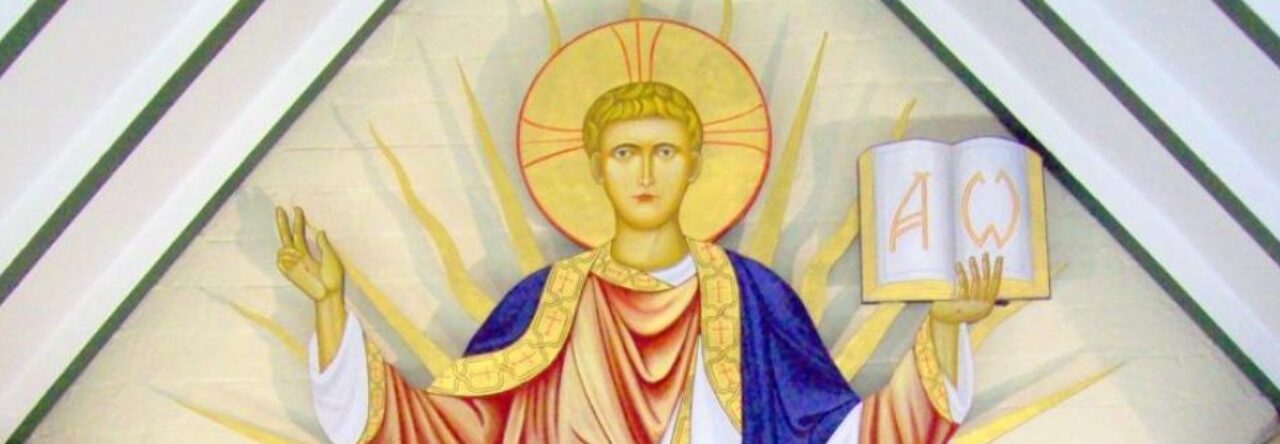Dear friends,
Although this month isn’t packed with notable feast days, there is a new feast day which will set this month apart for English Christians. Blessed John Henry Newman will be included among the ranks of the saints by Pope Francis on Sunday, October 13th in S. Peter’s Basilica, Rome.
John Henry Newman was born in 1801 into an evangelical family in the City of London. He went up to Oxford and eventually became a Fellow of Oriel College (full title – The Oriel College of Our Lady) and Vicar of the University Church of S. Mary. During his time in Oxford he became drawn to the high church tradition of Anglicanism and was a co-founder of the Oxford Movement, a movement which sought to restore to the Church of England the Catholicism it had generally claimed but ignored.
Newman was one of the driving forces behind a series of pamphlets entitled “Tracts for the Times”. These were disseminated among the clergy with the intention of recalling them to the catholic practices contained in the Book of Common Prayer. Tract Ninety was Newman’s attempt to give a catholic interpretation of what appeared to be the highly protestant Thirty-nine Articles of Religion. Such was the uproar against him and his fellow Tractarians that he ceased to be vicar of S. Mary’s and withdrew to a quasi-monastery at Littlemore, near Oxford.
In 1845 he was received into the Roman Catholic Church. (The Catholic Movement in the Church of England continued inspite of his, and others, departure for Rome. Sneyd parish was the direct result of that movement.) He was ordained priest and founded the Birmingham Oratory – a community of priests praying, teaching, and serving parishes in the city. He was also instrumental in founding the Catholic University of Ireland in 1854. Among his writings, apart from the various tracts, he wrote The Dream of Gerontius, a lengthy poem which was abridged by Edward Elgar and set to music. (“Firmly I believe and truly” and “Praise to the holiest in the height” are hymns extracted from that lengthy work – but set to different tunes.)
In 1879, Newman was created a cardinal by Pope Leo XIII. He died in August 1890. Half of his life was spent in the Church of England and half in the Roman Catholic Church.
Newman’s writings and theology influenced the direction of the Second Vatican Council in the late 1950s and early 1960s. His desire was for truth and reality as opposed to sentiment and feeling. Substance was all-important, not style. His writing is elegant and clear with touches of humour. (“I see ….. has proffered an olive branch, albeit fired from a catapult.”
He was buried in the community’s graveyard at Rednal, near Birmingham. His study has remained as a memorial within the Oratory complex. In 2010, Pope Benedict declared him Blessed during his visit to Great Britain. His canonisation (recognition of sainthood) was officially approved by Pope Francis last February. His feast day will be October 9th.
Since Blessed John Henry’s beatification (one step down from sainthood), the Oratorians in Birmingham have created a chapel to Newman’s honour in their church. This contains relics associated with the holy man, though not his actual body. On exhumation, this was found to have disappeared into the damp soil of the area! We are most fortunate at Sneyd Church to have, thanks to Father Kevin, a tertiary relic and a small shrine to Cardinal Newman. The tertiary relic is a small part of a cope (a cloak worn during various ceremonies in church) that Newman wore during worship in the Oratory.
Blessed John Henry Cardinal Newman (soon to be Saint John Henry) is an important person who learned his faith within our own church and continues to influence the church of his conversion. His writings are as important today as they were in his own time, in fact he was ahead of his time. Even in his years as an RC he was treated with suspicion, not least in his distrust of the placing of all authority in the hands of the Pope – ultramontanism, as it was called.
On Wednesday October 9th, we will have our usual evening mass but with more solemnity than is normal. The relic will be available for veneration and his prayers will be invoked. Ask him for his prayers now as we journey in faith as he did. “Blessed John Henry, pray for us. Saint John Henry, pray for us.”
Every blessing,
